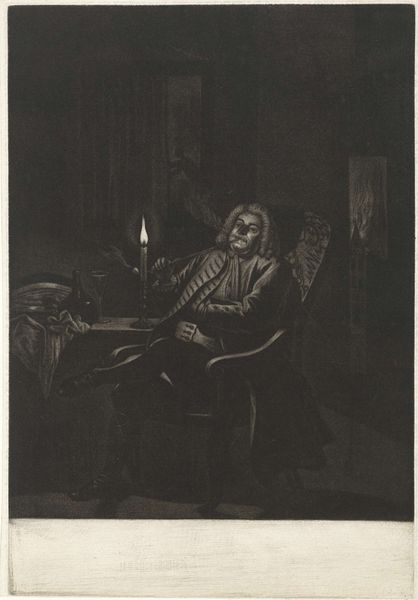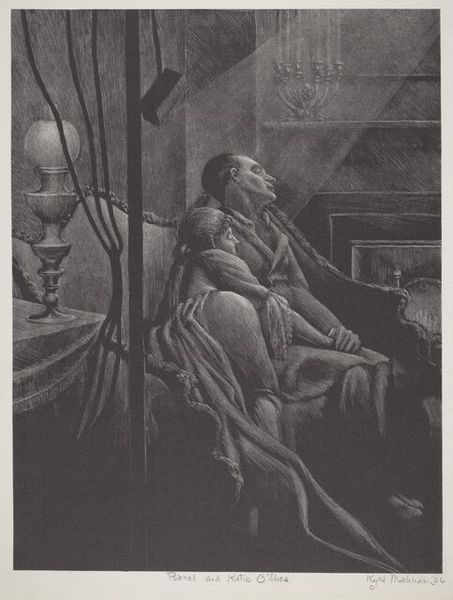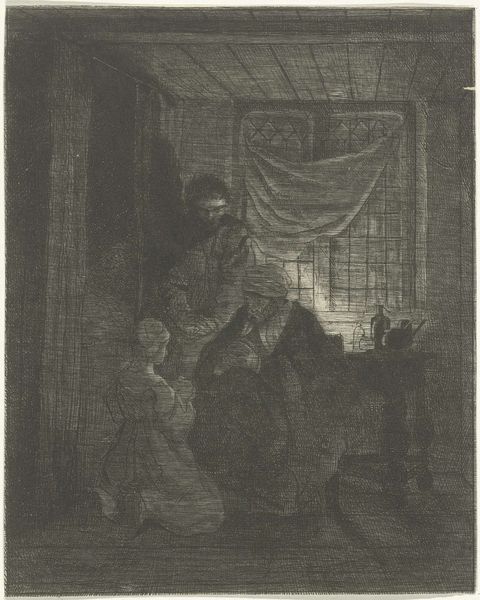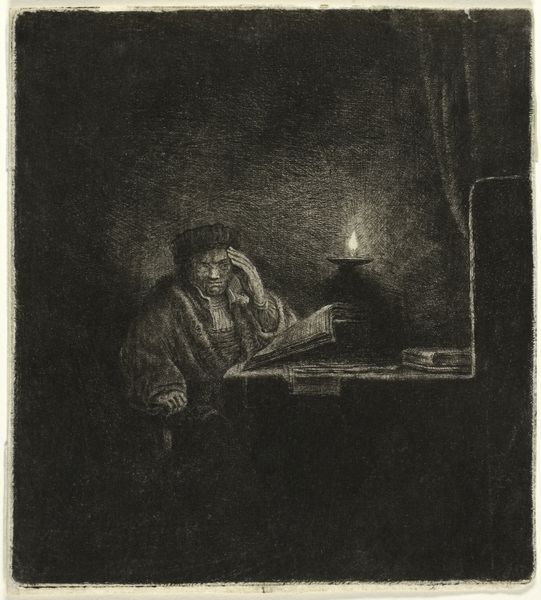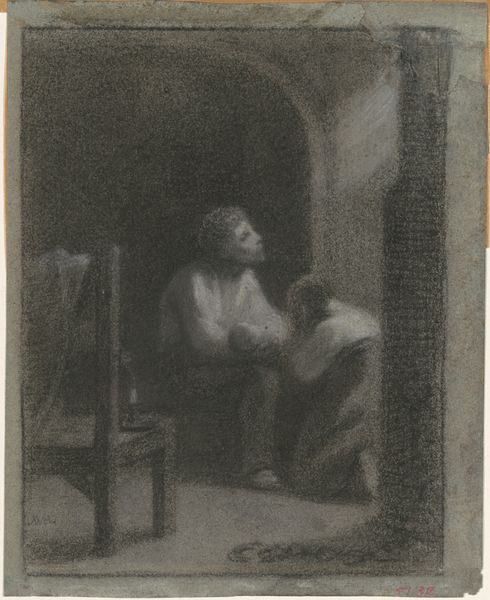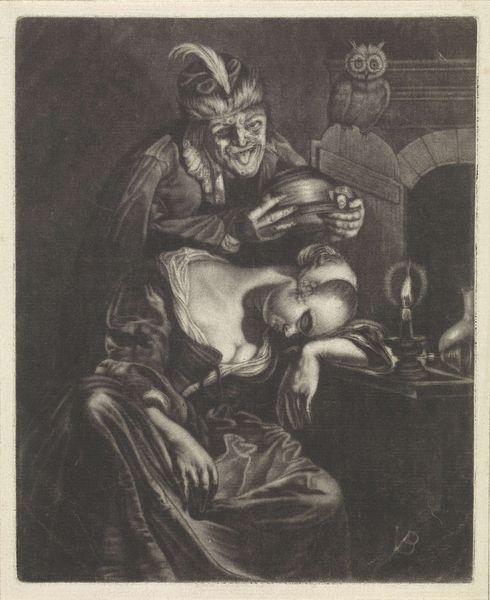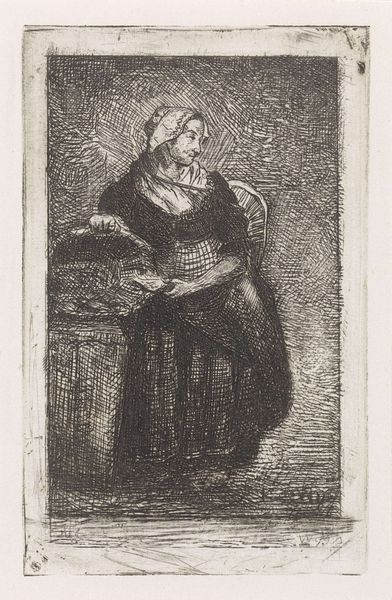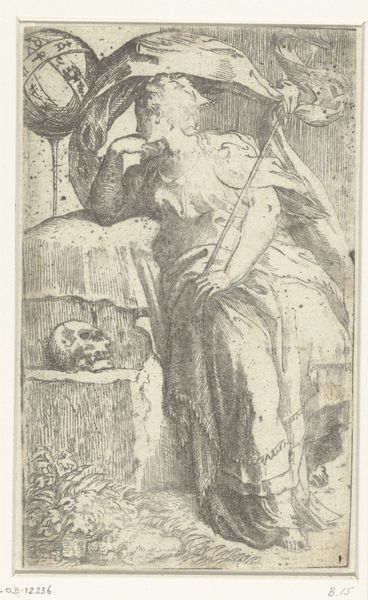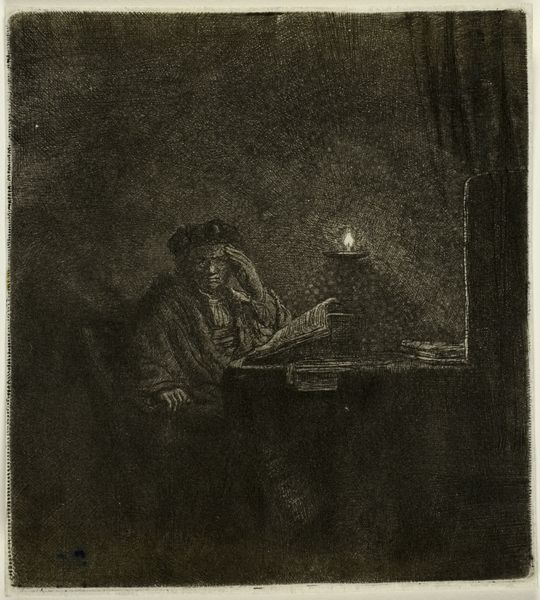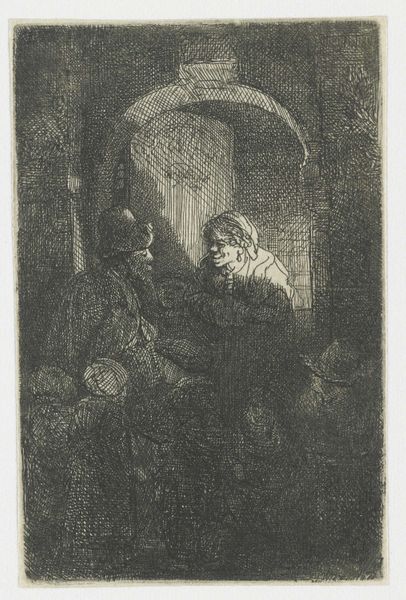
engraving
#
dutch-golden-age
#
old engraving style
#
pencil drawing
#
chiaroscuro
#
genre-painting
#
engraving
Dimensions: height 350 mm, width 253 mm
Copyright: Rijks Museum: Open Domain
Editor: We're looking at "Slapende vrouw" by Gerard Valck, made sometime between 1662 and 1726. It’s an engraving. The subject matter is humble, really - a woman asleep in a simple room. I’m curious about the heavy use of shadow and light. How does that visual dynamic inform the work, from your perspective? Curator: Indeed. Valck uses chiaroscuro, a technique of contrasting light and shadow, not merely to depict form, but as a structuring device. Observe how the composition hinges on this very opposition. Light is concentrated, almost dramatically, on the woman's face and hands. Editor: So, the areas that convey expression and activity. Curator: Precisely. Then note how the surrounding space dissolves into a darkened ambiguity. The texture of the engraving, rendered through meticulously etched lines, varies in density to amplify this effect. Consider the candle, how its form and its symbolic, flickering luminescence punctuate this somber scene. Editor: It’s interesting how the only light source is that small candle. What do you think is emphasized with that artistic decision? Curator: This considered interplay redirects us back to the fundamental elements: form, tone, and line. How effectively does Valck’s method serve its artistic purpose? The tight compositional arrangement—the tilt of her head mirroring the angle of the table—how does it resonate formally? Editor: I see it, a visual echo almost. This emphasis pushes you to study the image. I guess it’s how such attention to detail creates a captivating effect, beyond subject. Curator: Exactly! The beauty lies in the intrinsic construction. We’ve moved beyond simply seeing, haven't we? Editor: Absolutely, it encourages a far more structural, analytical look at the artwork itself.
Comments
No comments
Be the first to comment and join the conversation on the ultimate creative platform.
